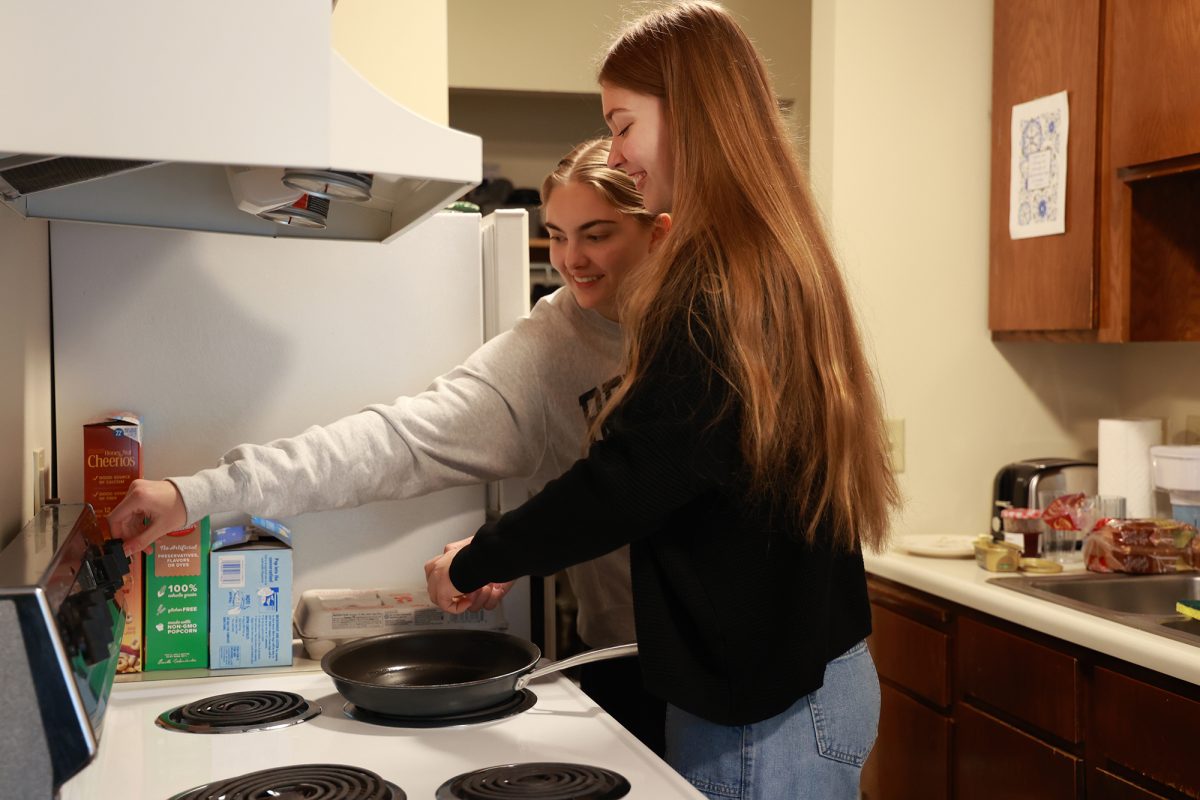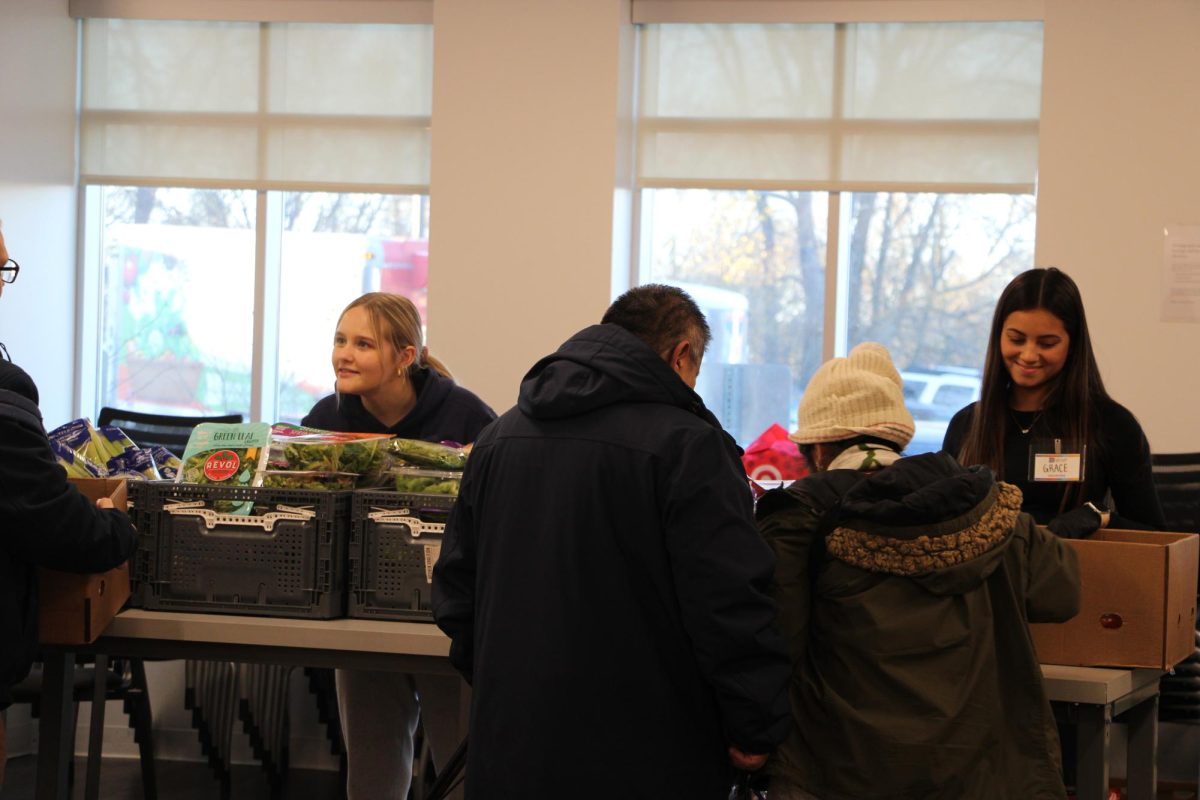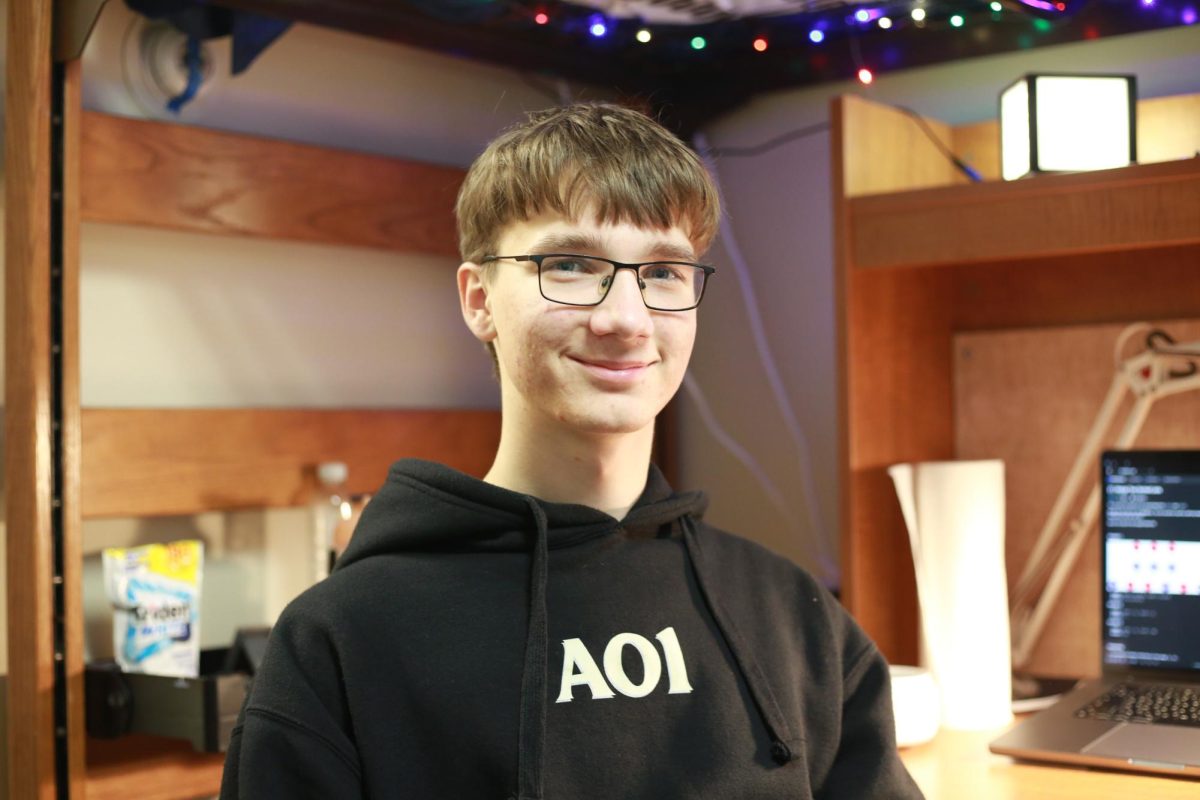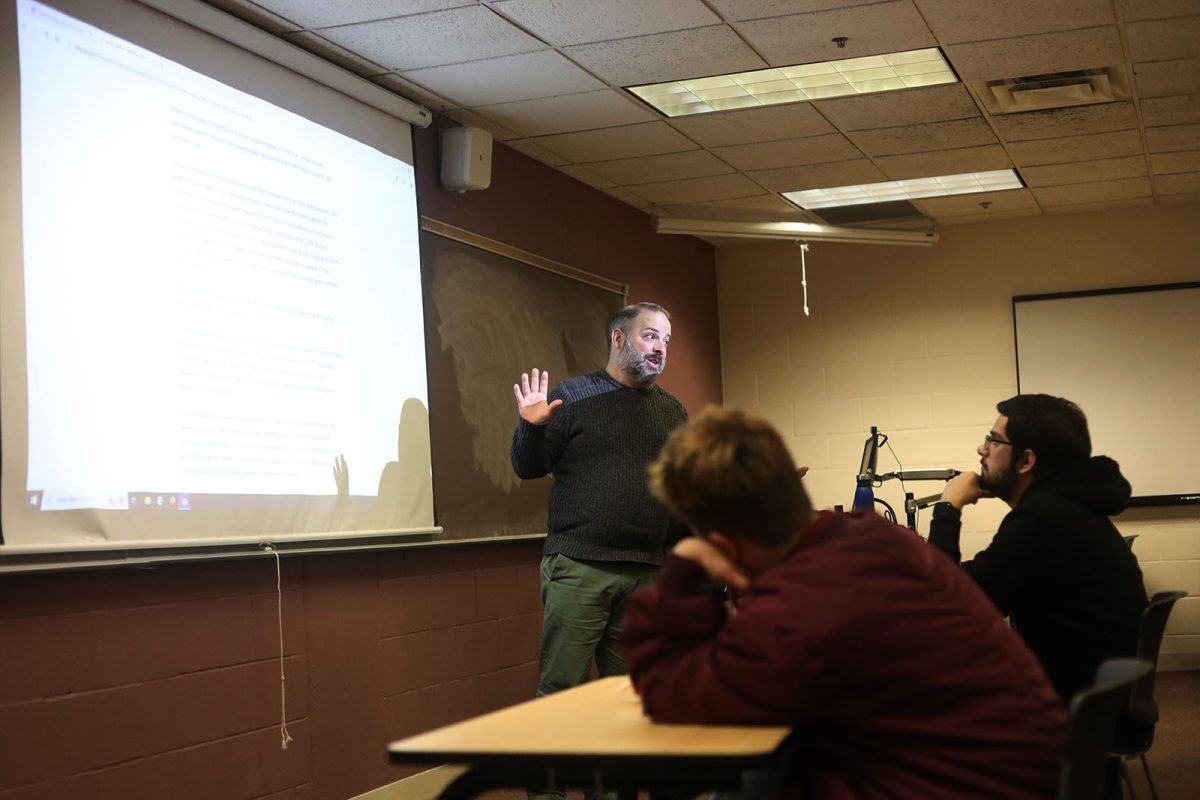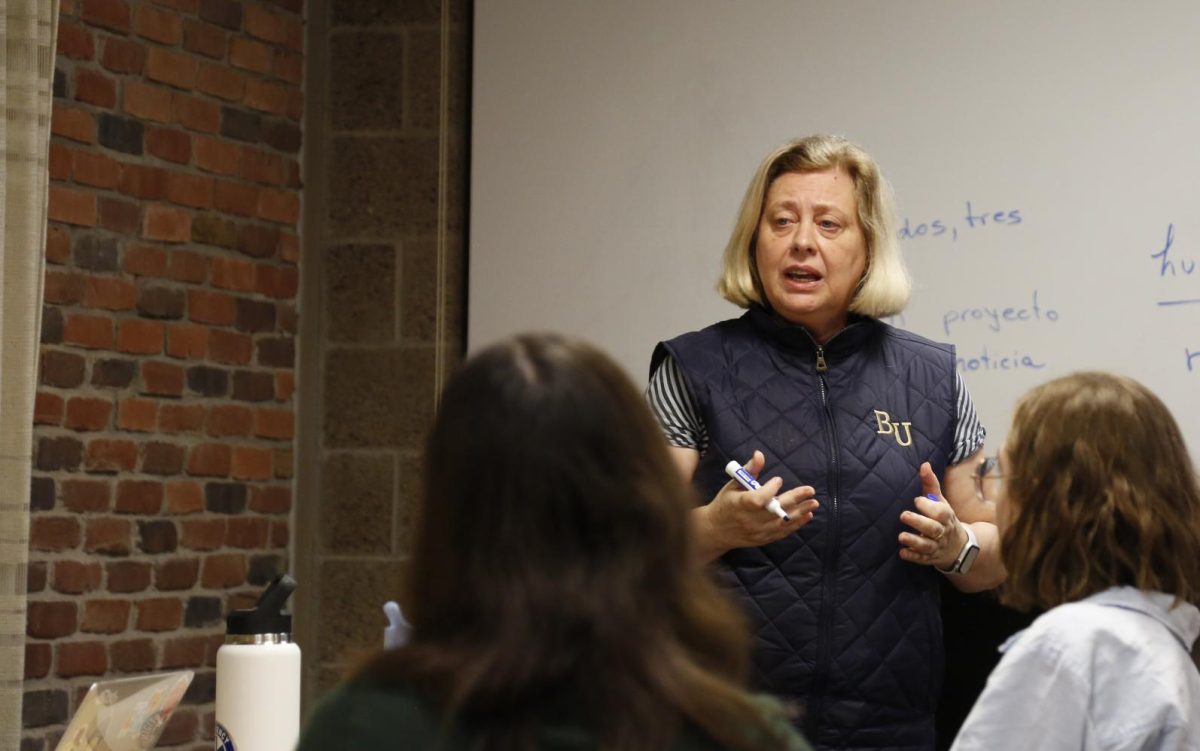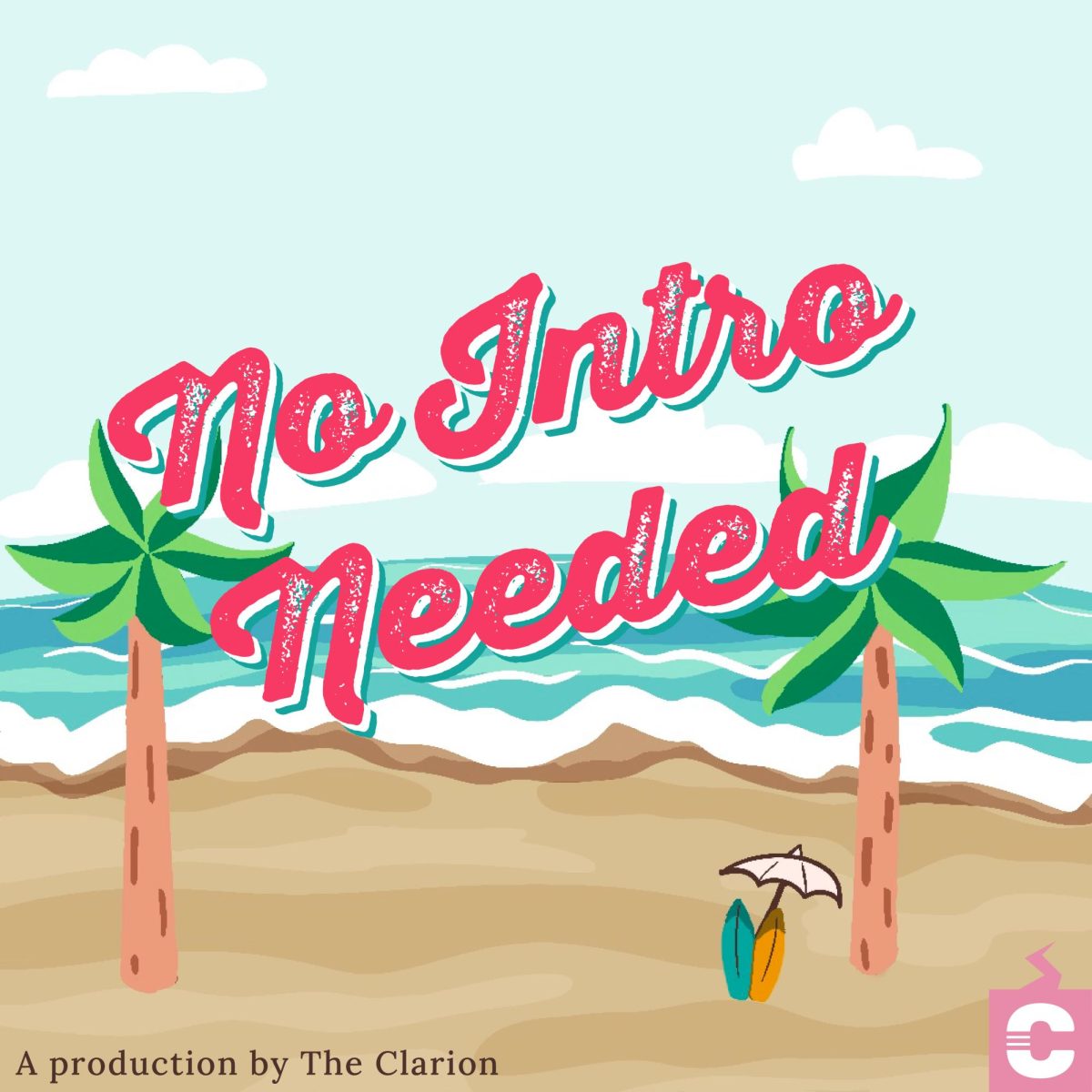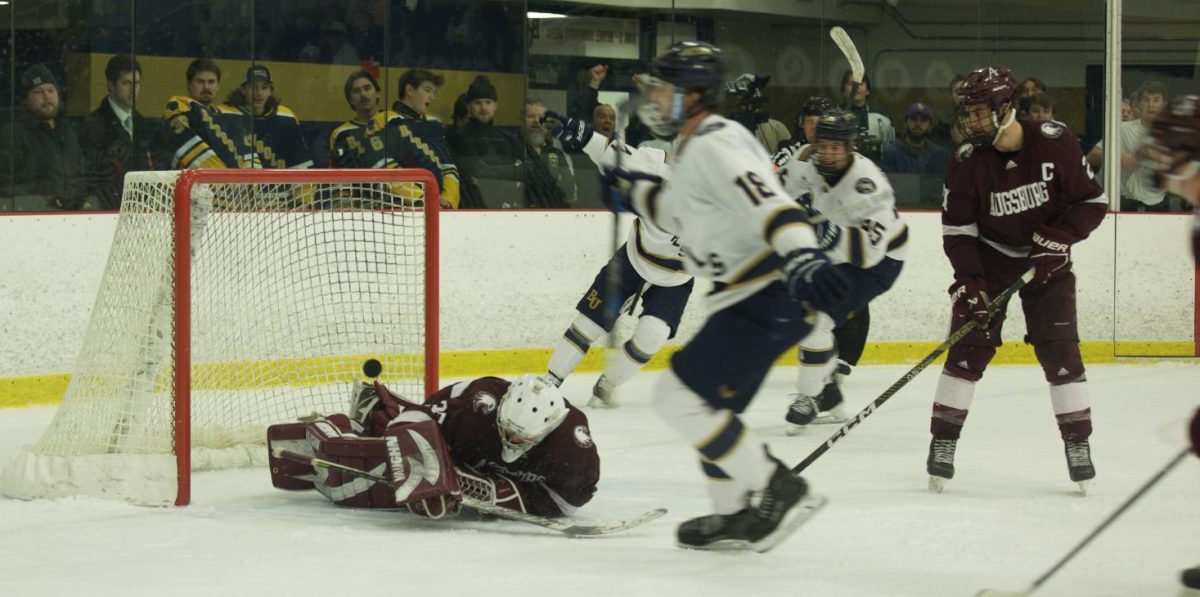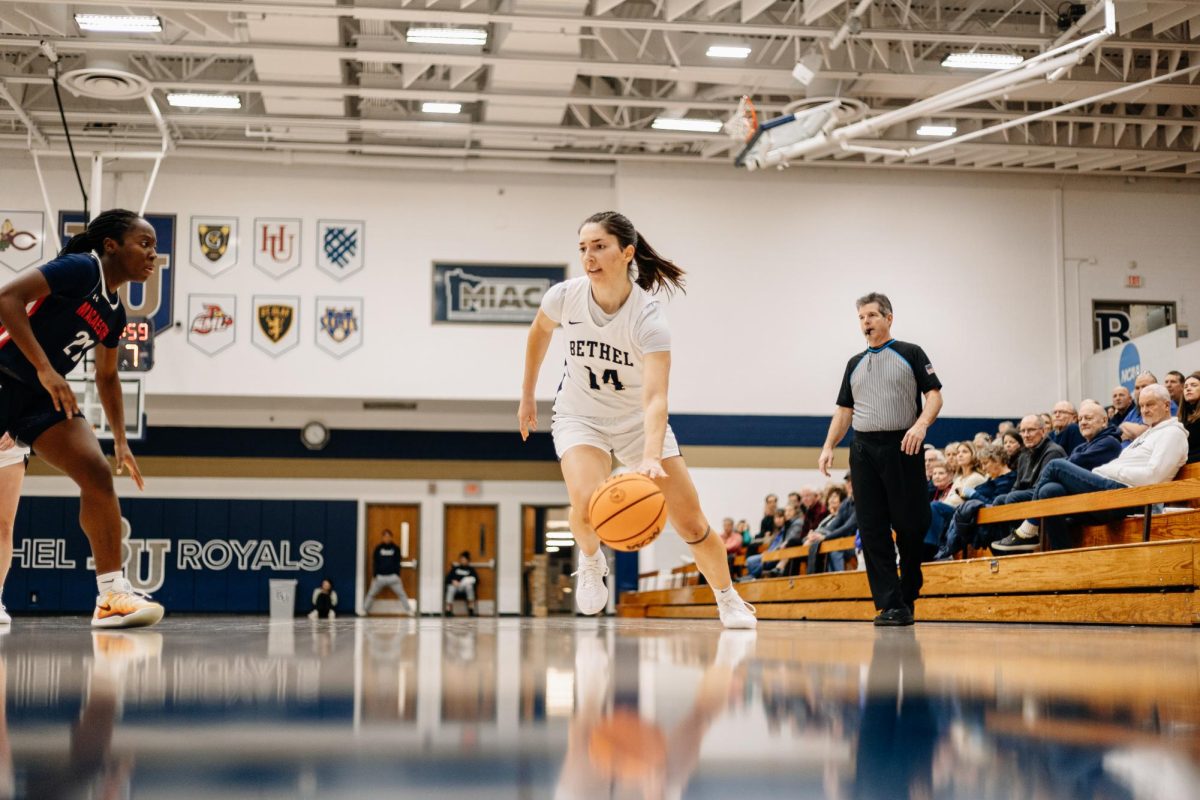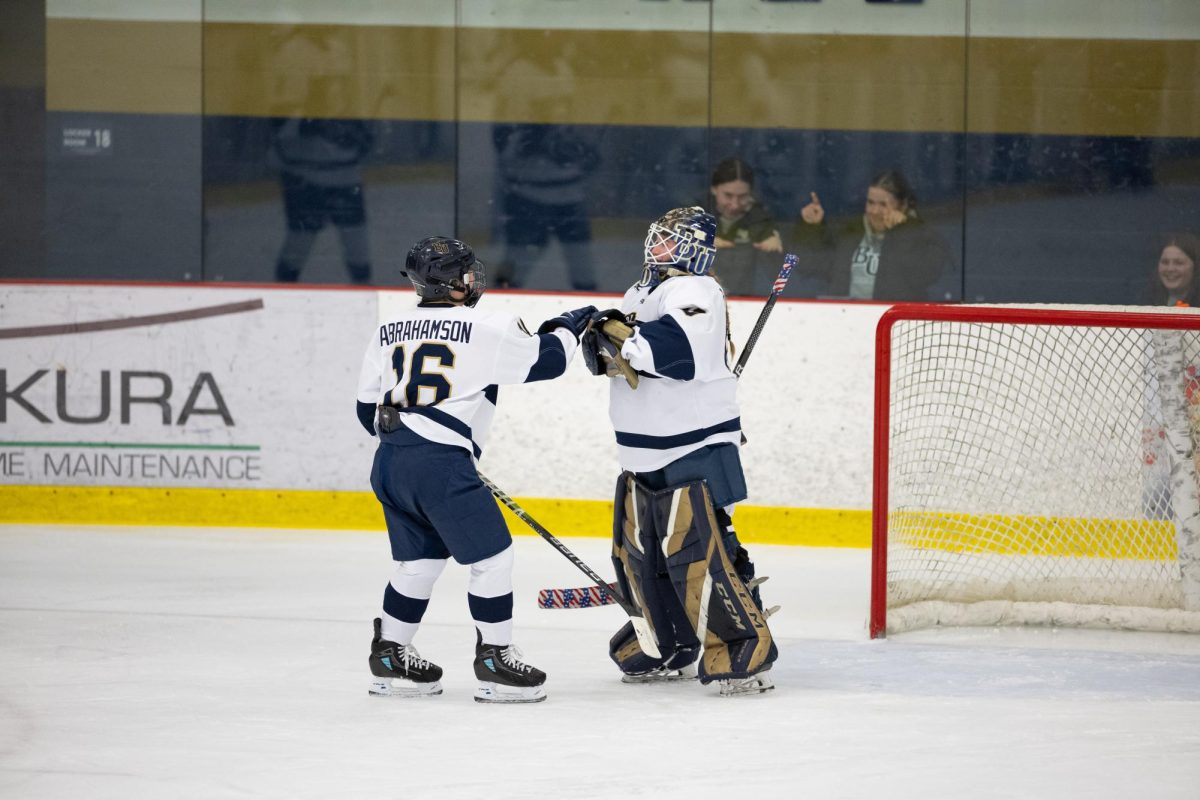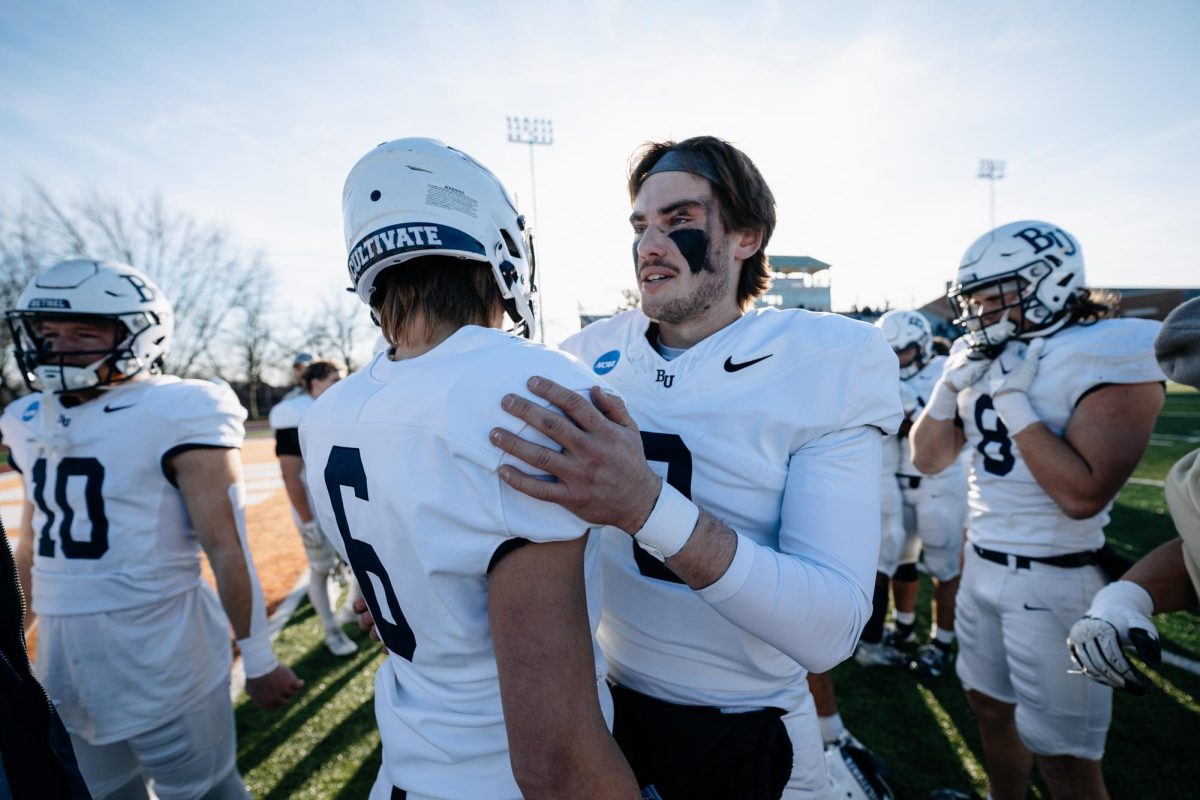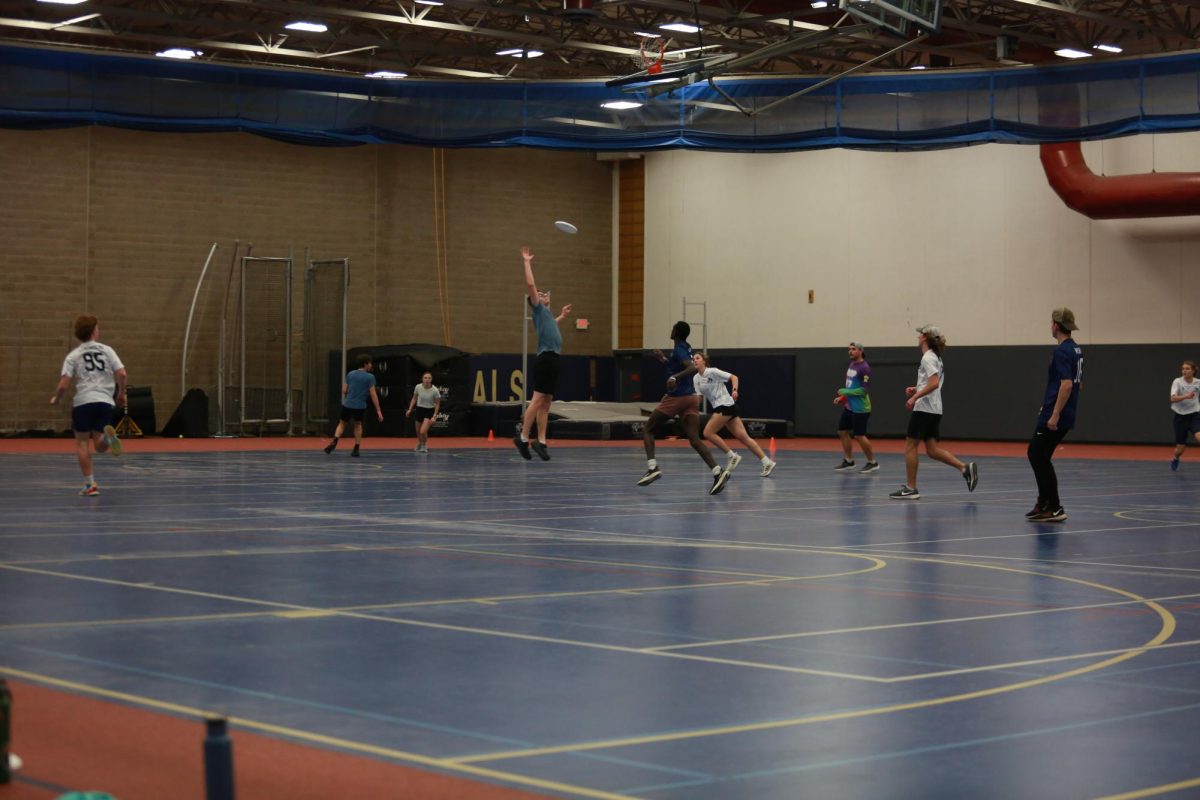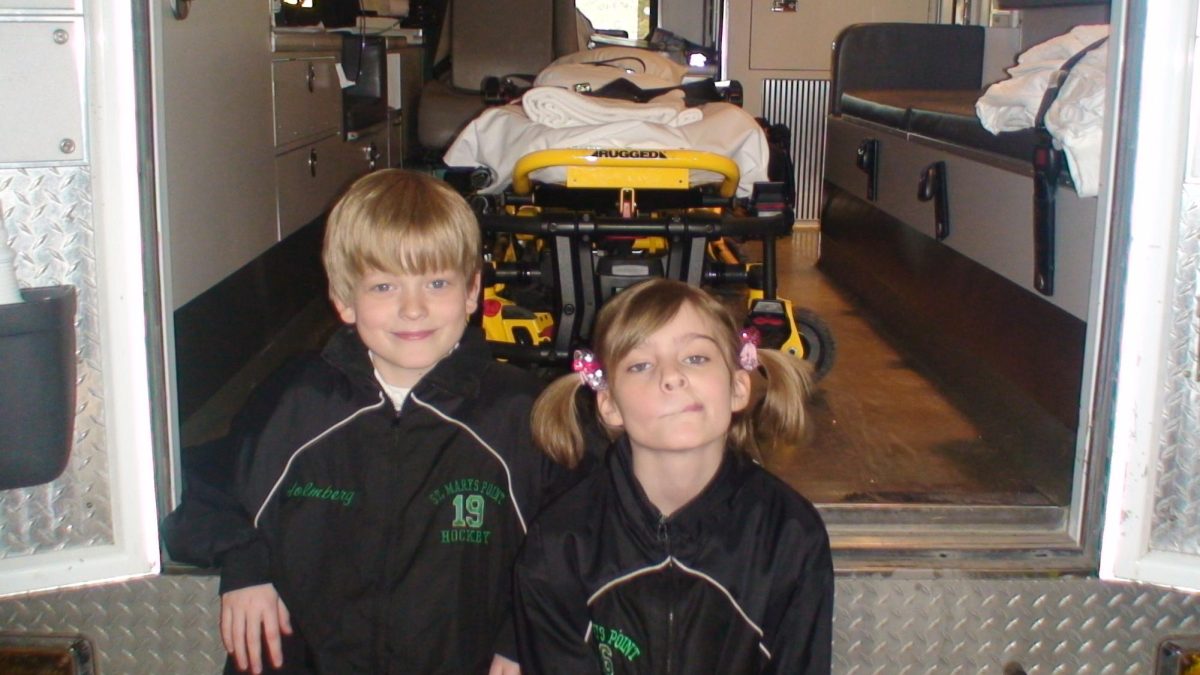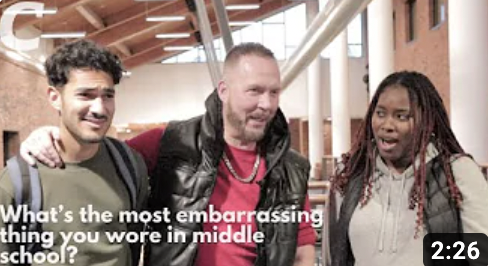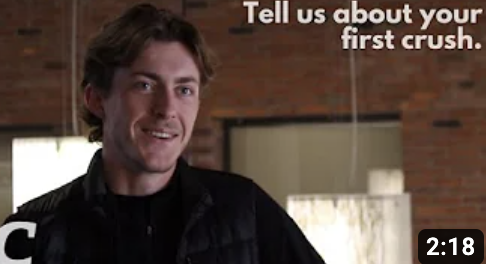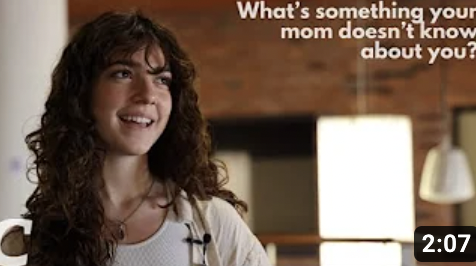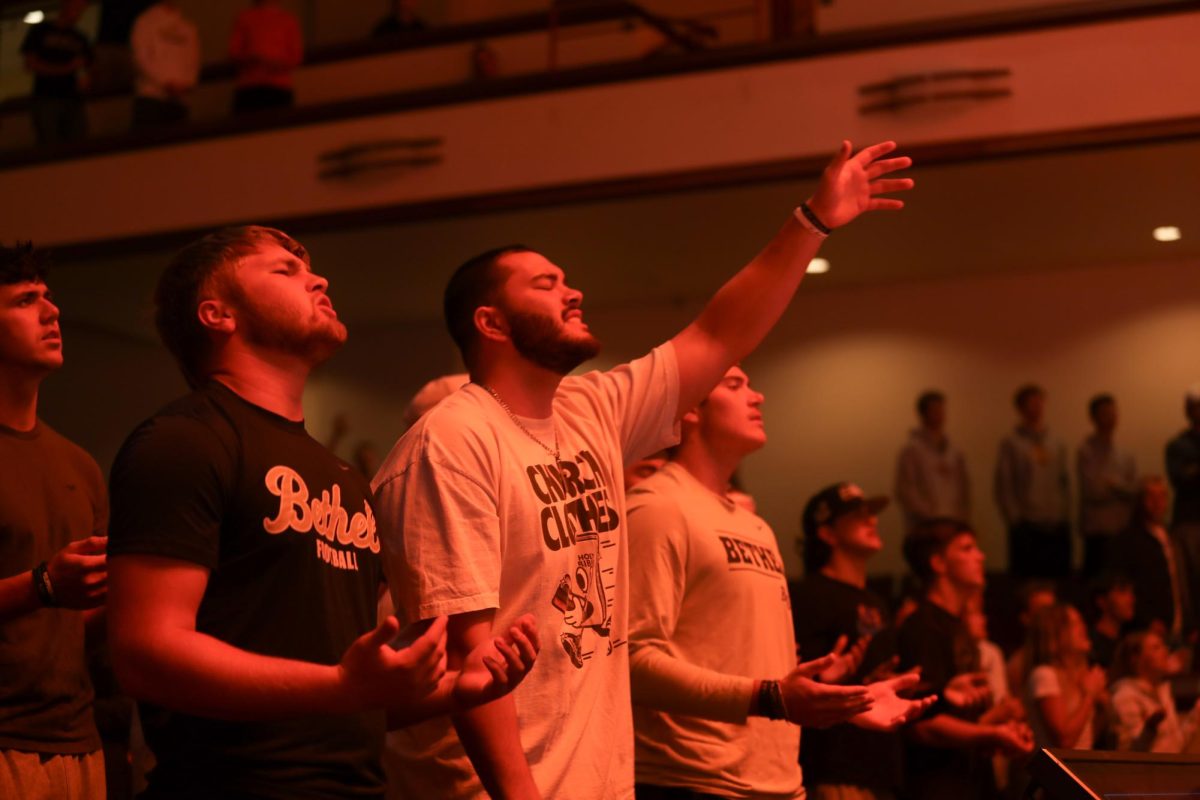M. Gasby Brown is a full-time artist specializing in painting and drawing. In the past, Gasby Brown has been a TV correspondent, professor and national organizations executive. Her art has been displayed in multiple art exhibits across the country.
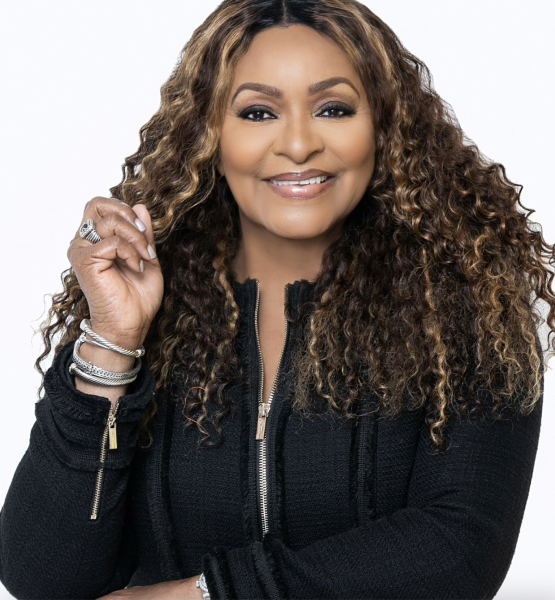
Gasby Brown’s most recent collection, “Backstage Barriers and Beyond,” was displayed on the walls of the Bethel University library during the month of February. The collection abstractly depicts Black female musicians: Ella Fitzgerald, Mahalia Jackson, Billie Holiday, Nina Simone, Lena Horne and Alicia Keys.
Can you describe where you grew up and what it was like?
“I grew up in Detroit, Michigan. It was a wonderful experience because Henry Ford wanted to create a community overall that could be a model — culturally, politically and institutionally — that the city could be a beacon of life, if you will. I took ballet, baton twirling and tap dancing — all of these were just part of my growing up. Growing up there with great supportive parents, anything I sought to do that was positive, they were in my corner so that’s what gave me the opportunity to have curiosity.
People have this impression about Detroit, but when I grew up in Detroit there were very few gangs. We had social clubs, and in these social clubs we would dress up and have black-tie events, and we would have dances where we would just gather. There would be a DJ and we’d just dance for three or four hours and have a lot of fun.
I am really such a fan of Detroit, and it’s come back because I lived there during a hay day of its existence and experienced so many wonderful things in Detroit. So, I love Detroit, Michigan.”
How did you get connected with Bethel, and why Bethel?
“I had been to Minneapolis and St. Paul teaching and training staff members for Bethel in the advance department. I met Jay Barnes, and somehow my name bubbled up four years ago and they reached out to me to see if I’d be interested in being on the Board of Trustees.
Because of Bethel’s mission to develop Christian leaders to go out into the world, I considered it and after several conversations, they invited me to be on the board and I accepted. I was asked to be on the chair of trustees because of my expertise in nonprofit governance. Also, because of my experience and deep interest in diversity, equity and inclusion, I formed the ‘Elevating Equity (E^2)’ task force.”
What are your current career roles?
“Right now I am laser-focused on being a professional artist. This is not a hobby for me; this is a professional career. My days are spent creating, painting and drawing. I also do a lot of reading because I’m self-taught. I read books about color and collage. That is how I spend my days these days, along with being a business manager.”
You describe your artistry as a “calling.” Why is that?
“Yes, because I was having these visions of painting trees and other objects — this was in 2002 and it was so overwhelming that I had to pay attention to it. I woke up one morning and told my husband, ‘I’m going to start painting.’ I went to the craft store and bought paint, canvas and brushes and began to paint.
As I painted, I couldn’t believe it because I’d never painted before. It was apparent to me that this was something the Lord instilled in me. That’s why my website is called ‘No Permission Needed,’ because I needed no earthly permission to do it.
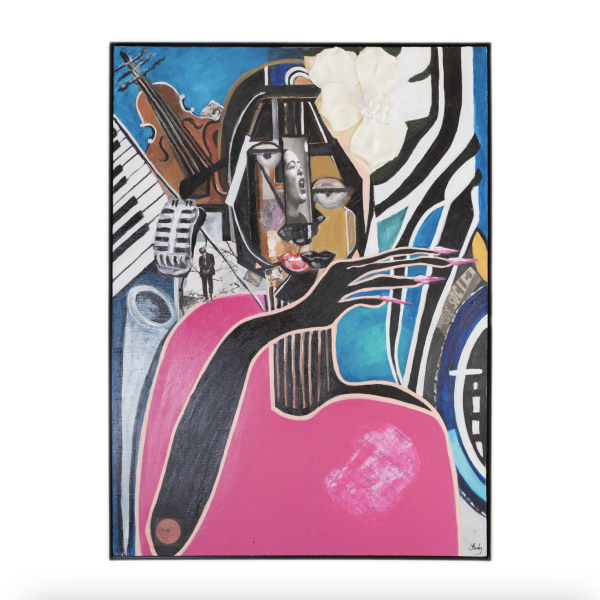
What was your relationship with art like before you identified as an artist?
“In the third grade, my art teacher Mr. Mason had us do a still life. He sent a letter home to my parents saying that I had promise. My dad at the time worked in the government and he had a graphic artist teach me how to position a face. I had maybe one or two sessions with him. When I think back to it, that’s when I see I may have had some sort of talent that I never pursued. Another thing is that when I’d prepare to travel, I would doodle my outfits because I didn’t want to repeat them. Even to this day I still do it.”
Your 2024 collection highlights Black female musicians. What inspired this collection?
“I started doing a tribute to Billie Holiday because she was very much a part of the anti-lynching movement. I started the portrait of Billie, showing a man hanging from a violin string, obviously being lynched. After working on her for many months I decided it’s not just Billie Holiday. I thought, Ella Fitzgerald, what did she have to face, and how about Lena Horne and all of her activity in being a civil rights activist, oh and I can’t forget Nina Simone who I love and listen to as I’m painting.
It just evolved from woman to woman on who should be involved. There were criteria in my creative mind, they had to have been either discriminated against or a part of a social justice movement for me to even begin to think about women I wanted to paint. Looking at these women who broke barriers, I decided to add Alicia Keys, and I’m working on Aretha Franklin. That’s also why the series is called, ‘Backstage Barriers.’
The series is designed to teach. Because when I give the narrative on Ella Fitzgerald and I talk about how she sings ‘A-Tisket, A-Tasket, he stole my yellow basket,’ I began to think, Well, what’s in her yellow basket? When she sang her heart out she had to look in the ‘Green Book,’ which a lot of people don’t know about, that would tell Black people where they could and couldn’t stay in the South. Even though she was singing her heart out, she had to go through the colored entrance to enter into the hotels and clubs she was singing in.
This story needs to be told, and the story of Lena Horne and the fact that colorism was a part of her life — that she was too light for some and too dark for others. I could go on and on [about] how each of their life experiences shaped who they are, and need to be told.”

In what ways does being a Black woman impact and inspire your work?
“It has inspired my work simply because my work is a reflection of my experiences as a Black woman in this country and my place in the world. My experience is varied. I’ve definitely experienced racism. I’ve seen the highs and lows of the civil rights movement. I’ve seen progress. I’ve seen the steps taken to further the social justice movement, because the social justice movement is very much needed.
My own deep feelings of injustice are just an inherent part of my artistic expression. I remember seeing the image of when Emmett Till was murdered when I was a little girl in Jet Magazine, and how he looked when they found his body. That image has never left me. It’s these kinds of things we as people carry, and it is a part of my agency as a Black woman to express what I have felt and experienced based on race.”
Why choose to display your work at Bethel during Black History Month?
“Well, being in Minneapolis and Minnesota, I believe there is a culture there that needs to know more about other cultures. I love the fact that Bethel was founded by Swedish Christians and the way it has evolved over the years, and over decades, to be the kind of institution that it is, but there is still something very much missing.
The story is incomplete without talking about Black history, and there is an opportunity to educate people in the region about the accomplishments and the barriers that have taken place in the African American experience. Jesus is our example, and he’s the greatest example — his heart and compassion for love and understanding that we are all his father’s creations and that we have to be appreciated as such. Our fallen state of not recognizing slavery for what it was — in fact, using Christianity as justification for it in some instances. The record needed to be set straight.
I’m really feeling very good about what the inclusive excellence team is doing. I just really believe that there has been a lot of misinterpretation and misconceptions about the importance of understanding African American history in the Christian community overall. Bethel being a beacon of education and sending out leaders to make an impact on the world, it’s just important that the students at Bethel know this history. Because without it, they are incomplete leaders in my view.”
Was there any specific artist you focused on in this body of work that you felt had a personal connection to your own experiences or identity?
“Yes, more than one. It’s an amalgam of each of them, to be honest with you. I really felt connected to Ella’s sheer talent because I believe in my talent. But she believed in herself and kept going, I really resonated with her. Nina Simone — now, her grit that really hit my ethos and agency. Her outrage and her ability to express herself with passion, that resonated with me because I really feel deeply the sense of injustice. I feel deeply that I have to do something and say something about social justice.
As an African American woman, I resonate with Lena Horne and how she fought to be recognized in society. Then with Mahalia for so often being underestimated. People really didn’t know how much she contributed to the civil rights movement financially and her impact on Martin Luther King. And Alicia Keys, how she felt she had to say something about Michael Brown, Sandra Bland and injustice. I really imagine what Sandra Bland went through in that jail cell when she was killed. It hits my spirit in the same way I can still feel viscerally and very, very deeply how Emmett Till was tortured.”
Outside of art, how do you support social justice work?
“I support social justice organizations financially, and I’m using my ‘artivism’ as a way of making a contribution to furthering knowledge about social justice and the need for it. And so I think right now my concentration is on making my art tell the story, and that’s my contribution — and having my art exposed to as many places as possible to tell the story far and wide.”
Are there any specific artists that inspire you?
“William Tolliver, Jacob Lawrence, Lois Mailou Jones, Elizabeth Catlett, Romare Bearden and Gilbert Young.”
This style of art is different from the one you started with. What has that experience been like?
“Play is what it is. It’s so much fun to be free enough. Play time is freedom time. Remember when we were in school and had recess? That was a time when we could just go out and run and do things. So I think the analogy there would be that I have the opportunity to play with colors, symbols, objects and various ways of painting with this abstract way of presenting the art. And it’s just really fun, yet it’s a learning process at the same time. It’s learning and fun all at the same time.”
What is your method of creating?
“It’s a combination. Some days I wake up in the morning, thinking about art and pieces I can paint. I can see it so clearly. I have my eyes closed, I’m still lying in bed and I see a piece that can be created. I’ll go up to my studio — my studio is right upstairs at home — and I will create that. And then there’s some days that I sit, and I just begin to paint on a canvas or draw, and it becomes something that I didn’t expect. But that’s another delight in doing what I do — to see the outcome that I didn’t intend in the first place.”
You say you’ve experienced God-given visions when you’ve created art. Does this show up in other areas of your life?
“It comes through the art for sure, but I find people come to me asking my opinion about things because of the thoughtfulness and some of the ideas that come when I’m giving them feedback on certain things. And I wonder, How did I think about that? I don’t want to be a psychologist, even though my major in undergrad was psychology. I’m struggling to answer this, because I’m trying to figure it out myself, as to how and why I’m able to give feedback to other people about their problems,and their lives and situations.
It makes so much sense and it seems to me that it’s coming from somewhere else and not just from me. But maybe it’s just that I have a plethora of experiences coming together. Being able to be used by the Lord to help people in their direction in life is a gift, and I never talked about that in this way before.”
What advice would you give to artists who may feel held back in sharing and creating art?
“Surround yourself with people who affirm your work, who affirm you as an individual and affirm your aspirations. And once you’re surrounded with people who affirm your aspirations, the confidence and the pleasure of creating will come.”
How do you hope people will engage with your art?
“I’m hoping that they will look at it carefully to see the collage pieces and the symbolism that has been put in each piece. To just look at it as a piece of art — not looking at those kinds of symbols — would not give the complete picture. I’m hoping that they will read the didactics and the narratives on the side so they can get a clearer picture of what was intended for each piece. So that’s why this is an education series. This is designed to educate people, and I’m hoping that they will walk away with more knowledge about inclusive excellence than they ever had.”
Gasby Brown’s art is for sale on her website, No Permission Needed Art. She is actively working on art pieces in her home studio in Atlanta, Georgia. Gasby Brown plans to create prints of her art in the future to make it more accessible to those interested in owning her work. “Backstage Barriers and Beyond” will be added to with artists like Aretha Franklin.

